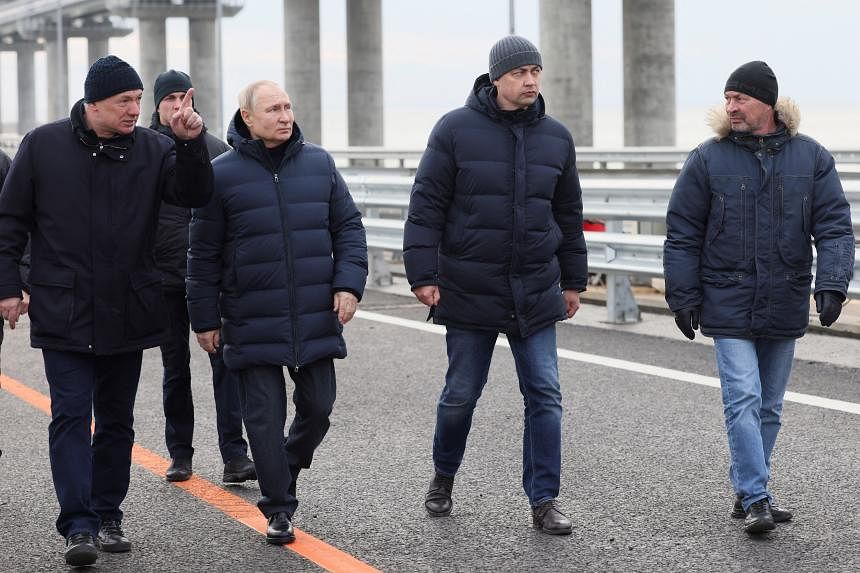
On December 5, Vladimir Putin walked the strategically significant Crimean bridge that connects southern Russia to the Crimean peninsula governed by Russia since 2014, 10 months after announcing “special military operations” against Ukraine. Less than two months had passed since an explosion destroyed the Crimean bridge, which the west interpreted as a significant advance for Ukrainian defenses against Russia’s continuous aggression against Ukraine.
As pictures of burning cars and burnt portions of the bridge appeared on social media on October 8, Ukrainian authorities welcomed its demolition as “a birthday gift to Putin.” In 2018, Putin opened the 12-mile (19-km) road and train bridge himself.
Marat Khusnullin, the deputy prime minister, followed Putin. He was seen on state television questioning the location of the attack while driving a Mercedes.
“We are driving on the right-hand side,” Putin said, as he drove across the bridge. “The left side of the bridge, as I understand it, is in working condition, but it needs to be completed. It still suffered a little, we need to bring it to an ideal state.”
Putin also strolled along portions of the largest bridge in Europe to examine areas where the October 8 attack had left its mark.
The attack on the Crimean Bridge in October
The bombing of the bridge on the morning of October 8, the day following Putin’s 70th birthday, was never assigned to Ukraine. The strike, according to Russia’s Federal Security Service, was planned by Ukrainian military intelligence. Traffic across the Kerch Strait was momentarily stopped by the explosion, which destroyed a portion of the road bridge. On a train from nearby southern Russia that was traveling to the seized Crimean peninsula, the explosion also damaged many gasoline tankers.
2014 saw Russia assert its administrative control over Crimea. Crimea, which depends on the bridge for essential supplies, has promised to return to Ukraine.
The massive structure, which is the longest bridge in all of Europe, was built by Arkady Rotenberg, a supporter of Vladimir Putin. Putin has long praised the undertaking, once claiming that Soviet and Russian tsars had fantasized about creating it but had never actually done it.
